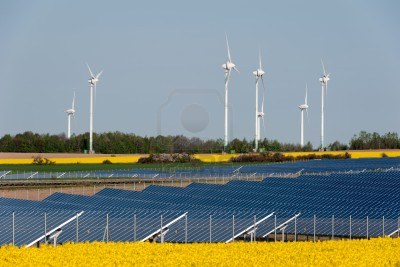India to install 350 GW of Wind & Solar
India is looking to set up an aggressive target to achieve 250 GW of solar power capacity by 2030, up from 100 GW by 2022. Wind has been set a target of 100 GW up from around 30 GW now. The combined 350 GW of wind and solar capacity will be around ~40% of India’s power capacity of 850 GW. This is quite ambitious and means that a large part of the 600 GW additional capacity will come from solar and wind. Hydro and nuclear energy are set to have miniscule growth targets with their capacity envisaged to grow to just 80 GW from 56 GW now, which means around ~2 GW a year.
India is under pressure to reduce greenhouse gas emissions, as it is already the 4th largest emitter in the world. Based on current growth rates, it will soon be the 3rd largest and developed countries want India to reduce its GHG emissions. This will not be easy, given the India’s economy is growing at 7% rates and the per capita energy usage remains extremely low. However, using a solar centric growth trajectory will help ameliorate the pressure on India from the USA and other countries.
What is helping India is that solar power has already become competitive with coal based power based on recent bids of 8c/kWh, seen in recent state tenders. This is expected to go down further even as fossil fuel power prices are increasing due to regulatory pressures, increasing land prices and time delays. India is also power deficient in oil and gas, so going solar also helps in improving the country’s energy security besides reducing the massive billion dollar fuel imports. It will be tough to reduce the reliance on thermal power, given it is the cheapest form of power and also India has abundant reserves of coal deposits found in multiple locations.
Gas is not expected to see much addition now, with the country aiming just to improve the utilization of the existing 25 GW of capacity. Much of this capacity is stranded as there is not enough supply of cheap domestic gas to meet the needs of these plants. Most of these gas power plants are running idle and the power prices are not high enough for them to run based on imported LNG. Though the government has provided subsidies for these plants to run on LNG for some capacity, it does not want to do so over the long term. Providing subsidies for expensive fossil fuel does not make sense, when the prices of green power are falling.
Google+


